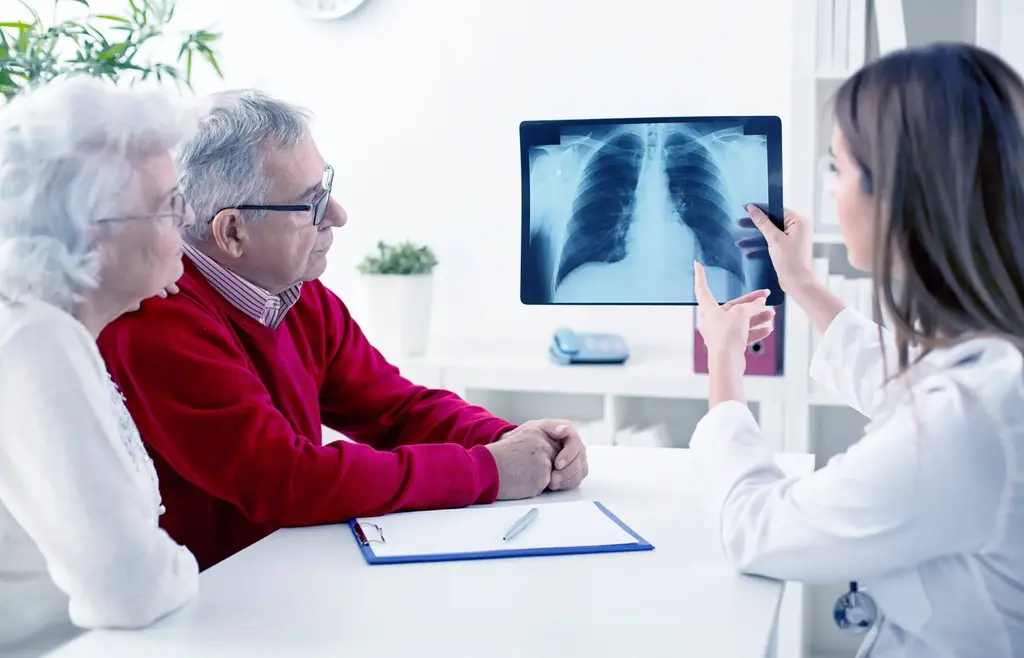Lung cancer remains one of the most critical health challenges worldwide, accounting for a significant number of cancer-related deaths annually. This comprehensive article delves into various aspects of lung cancer, including its types, causes, symptoms, diagnosis, treatment options, and preventive measures. By exploring these topics in detail, we aim to provide a thorough understanding of lung cancer to empower readers with knowledge.
What is Lung Cancer?
Lung cancer originates in the lungs, where abnormal cell growth leads to the formation of tumors. These tumors can be either malignant (cancerous) or benign (non-cancerous). However, malignant tumors are of particular concern due to their potential to invade surrounding tissues and spread to other parts of the body.
Understanding Tumor Growth
Tumors form when cells begin to grow uncontrollably, bypassing the normal regulatory mechanisms that govern cell division. This unregulated growth can lead to the development of cancer. In the lungs, these tumors can obstruct air passages, affect breathing, and ultimately impact overall lung function.
Key Statistics
- Prevalence: Lung cancer is the leading cause of cancer-related deaths, with approximately 1.8 million deaths worldwide each year.
- Survival Rates: The overall five-year survival rate for lung cancer is around 20%, but this varies significantly depending on the stage at diagnosis.
- Incidence: Most lung cancer cases are diagnosed in individuals aged 65 and older, though the disease can affect younger people as well.
Types of Lung Cancer
Lung cancer is primarily classified into two main types: Non-Small Cell Lung Cancer (NSCLC) and Small Cell Lung Cancer (SCLC). Each type has distinct characteristics, treatment protocols, and prognoses.
Non-Small Cell Lung Cancer (NSCLC)
Non-Small Cell Lung Cancer accounts for about 85% of lung cancer cases. This category is further subdivided into three main subtypes:
1. Adenocarcinoma
- Characteristics: Adenocarcinoma is the most common form of lung cancer among non-smokers and is frequently diagnosed in women. It tends to grow more slowly than other types of lung cancer.
- Location: This type typically arises in the outer regions of the lungs and may produce mucus, contributing to respiratory symptoms.
2. Squamous Cell Carcinoma
- Characteristics: Strongly associated with smoking, squamous cell carcinoma can often be detected earlier and is typically located in the central parts of the lungs.
- Origin: It develops in the flat cells lining the airways and is known for its aggressive nature.
3. Large Cell Carcinoma
- Characteristics: Known for its rapid growth and aggressive nature, large cell carcinoma can occur in any part of the lung.
- Cell Structure: Composed of large, abnormal-looking cells, it tends to spread quickly, making early intervention crucial.
Small Cell Lung Cancer (SCLC)
Small Cell Lung Cancer represents about 15% of lung cancer cases and is more aggressive than NSCLC. It tends to spread rapidly and is often linked to smoking.
Types of SCLC
- Pure Small Cell Carcinoma: This type consists solely of small, round cells that multiply quickly.
- Mixed Small Cell/Non-Small Cell Carcinoma: Contains both small cell and non-small cell components, complicating treatment options.
Causes and Risk Factors
Identifying the causes and risk factors associated with lung cancer is essential for prevention and early intervention. Risk factors can be categorized into modifiable and non-modifiable categories.
Modifiable Risk Factors
- Smoking
- Causative Role: Smoking is the leading cause of lung cancer, responsible for approximately 85% of cases. The risk increases with the number of cigarettes smoked and the duration of smoking.
- Impact of Cigarette Types: Both regular and light cigarettes pose risks, and even occasional smoking can increase an individual’s risk.
- Secondhand Smoke
- Definition: Exposure to smoke from burning tobacco products can harm non-smokers, increasing their risk of developing lung cancer.
- Statistics: Approximately 41,000 non-smokers die from lung cancer annually due to secondhand smoke exposure.
- Radon Exposure
- Source: Radon is a naturally occurring radioactive gas that can accumulate in homes, particularly in basements.
- Testing: Home radon testing kits are available, and mitigation techniques can reduce exposure levels.
- Asbestos Exposure
- Occupational Risk: Workers in industries such as construction, shipbuilding, and insulation are at higher risk due to asbestos exposure.
- Health Impact: Asbestos exposure significantly increases the risk of lung cancer and other related diseases.
- Air Pollution
- Environmental Factors: Long-term exposure to polluted air, including vehicle emissions and industrial pollutants, has been linked to an increased risk of lung cancer.
Non-Modifiable Risk Factors
- Age
- Statistics: The risk of lung cancer increases with age, particularly for those over 65. Most cases occur in older adults due to cumulative exposure to risk factors.
- Family History
- Genetic Predisposition: A family history of lung cancer can increase an individual’s risk, suggesting that genetic factors may play a role in susceptibility.
- Previous Lung Diseases
- Associated Conditions: Chronic obstructive pulmonary disease (COPD) and pulmonary fibrosis can elevate lung cancer risk due to pre-existing lung damage.
- Gender
- Differences in Risk: Historically, men are at a higher risk for lung cancer; however, the gap has narrowed with increased smoking rates among women.
Symptoms of Lung Cancer
Recognizing the symptoms of lung cancer early can lead to prompt diagnosis and treatment. However, many early-stage lung cancers are asymptomatic.
Common Symptoms
- Persistent Cough
- A cough that does not go away or worsens over time may signal lung cancer. Patients often describe it as a “smoker’s cough” if they have a history of smoking.
- Chest Pain
- Discomfort or pain in the chest that may worsen with deep breaths, coughing, or laughing is a common symptom.
- Shortness of Breath
- Difficulty breathing or wheezing may indicate tumor growth, obstructing air passages and impacting lung function.
- Weight Loss
- Unexplained weight loss and loss of appetite can signal underlying health issues, including lung cancer.
- Fatigue
- Persistent tiredness or weakness, even without exertion, can be a symptom of lung cancer or its treatment.
- Coughing Up Blood
- Hemoptysis, or blood in sputum, is a concerning symptom that warrants immediate medical attention and evaluation.
Less Common Symptoms
- Hoarseness: Changes in voice quality can occur if the cancer affects nearby nerves.
- Frequent Respiratory Infections: Increased susceptibility to pneumonia or bronchitis may indicate lung problems and warrant further investigation.
- Bone Pain: Pain in the bones can occur if cancer has metastasized to these areas, indicating advanced disease.
Diagnosis of Lung Cancer
Early and accurate diagnosis is crucial for effective treatment. Various diagnostic methods are employed to confirm lung cancer.
Diagnostic Procedures
- Imaging Tests
- Chest X-ray: Often the first step in diagnosis, it can reveal abnormalities in the lungs, such as masses or fluid accumulation.
- CT Scan: Provides detailed cross-sectional images and helps determine the size and location of tumors. CT scans can also assist in staging the cancer.
- MRI: Useful for assessing the extent of cancer spread, especially in the brain or spinal cord, and determining the involvement of surrounding tissues.
- Biopsy
- Purpose: A definitive method to diagnose lung cancer by examining tissue samples under a microscope.
- Types of Biopsies:
- Needle Biopsy: A thin needle is used to extract tissue from the lung, typically guided by imaging.
- Bronchoscopy: A flexible tube with a camera is inserted into the airways to view the lungs and collect tissue samples.
- Sputum Cytology
- Analyzing mucus (sputum) coughed up from the lungs for the presence of cancer cells can help confirm a diagnosis.
- Molecular Testing
- Genetic testing of tumor samples to identify specific mutations that may influence treatment options, such as targeted therapies.
- Blood Tests
- While not definitive for lung cancer, blood tests can provide information on overall health and help assess liver and kidney function.
Staging of Lung Cancer
Staging is crucial in determining the extent of cancer and informing treatment options. Lung cancer staging is typically classified from Stage 0 to Stage IV.
Staging System
- Stage 0 (Carcinoma in Situ)
- Abnormal cells are present in the lining of the lung but have not invaded deeper tissues. This stage represents the earliest form of lung cancer.
- Stage I
- Cancer is localized to the lung and has not spread to lymph nodes or other tissues. At this stage, treatment options are generally more successful.
- Stage II
- Cancer has spread to nearby lymph nodes but remains confined to the lung. Treatment may involve a combination of surgery and adjuvant therapy.
- Stage III
- More extensive spread to lymph nodes and surrounding tissues occurs, further classified into:
- Stage IIIA: Spread to nearby lymph nodes on the same side as the lung cancer.
- Stage IIIB: Spread to lymph nodes on the opposite side or above the collarbone.
- More extensive spread to lymph nodes and surrounding tissues occurs, further classified into:
- Stage IV
- Cancer has metastasized to distant organs, such as the brain, liver, or bones, indicating advanced disease. Treatment focuses on palliative care and managing symptoms.
Importance of Staging
- Treatment Decisions: Staging informs the choice of treatment options, such as surgery, chemotherapy, radiation therapy, or targeted therapy.
- Prognosis: The stage at diagnosis significantly affects prognosis and overall survival rates, with earlier stages generally associated with better outcomes.
Treatment Options for Lung Cancer
Treatment for lung cancer varies based on the type and stage of the disease, as well as the patient’s overall health and preferences.
Standard Treatment Approaches
- Surgery
- Lobectomy: Removal of a lobe of the lung; the most common surgical procedure for NSCLC, often resulting in a cure if performed in early stages.
- Pneumonectomy: Complete removal of one lung; typically performed in more advanced cases where other options may not be viable.
- Wedge Resection: Removal of a small, wedge-shaped section of the lung; often used for small tumors located in peripheral areas.
- Radiation Therapy
- External Beam Radiation: Delivers targeted radiation to kill cancer cells while sparing surrounding healthy tissue. This can be used as a primary treatment or adjuvant therapy.
- Stereotactic Body Radiotherapy (SBRT): A highly precise form of radiation therapy used for small tumors, delivering high doses of radiation in fewer sessions.
- Chemotherapy
- Systemic Treatment: Involves the use of drugs to kill rapidly dividing cells, administered orally or intravenously. It can be given before surgery (neoadjuvant) or after (adjuvant) to reduce recurrence risk.
- Common Drugs: Cisplatin, carboplatin, and paclitaxel are frequently used in treatment regimens, depending on the specific type of lung cancer.
- Targeted Therapy
- Mechanism: Targets specific genetic mutations in cancer cells, minimizing damage to healthy cells. This approach can lead to more effective treatments with fewer side effects.
- Examples:
- EGFR Inhibitors: Drugs like erlotinib or gefitinib are effective for patients with EGFR mutations.
- ALK Inhibitors: Medications such as crizotinib are used for patients with ALK rearrangements.
- Immunotherapy
- Mechanism: Enhances the body’s immune response to fight cancer. This innovative treatment approach is changing the landscape of lung cancer therapy.
- Checkpoint Inhibitors: Drugs like pembrolizumab and nivolumab block proteins that prevent immune cells from attacking cancer, providing new options for patients with advanced disease.
- Clinical Trials
- Patients may consider participating in clinical trials for access to innovative therapies and treatments that are not yet widely available. These trials often evaluate the efficacy and safety of new treatment combinations.
Managing Side Effects of Treatment
Lung cancer treatments can lead to various side effects, impacting the patient’s quality of life. Effective management of these side effects is crucial for maintaining well-being during and after treatment.
Common Side Effects
- Fatigue
- A common side effect of both chemotherapy and radiation, fatigue can significantly affect daily activities. Patients should prioritize rest and consider light exercise as tolerated to improve energy levels.
- Nausea and Vomiting
- Many cancer treatments can cause nausea. Medications such as antiemetics can help manage nausea associated with chemotherapy and improve patients’ quality of life.
- Loss of Appetite
- Loss of appetite is frequent among lung cancer patients. Eating small, frequent meals and focusing on nutrient-dense foods can help maintain energy levels and prevent weight loss.
- Pain
- Pain management strategies may include medications, physical therapy, or palliative care approaches to ensure patients remain comfortable during treatment.
- Hair Loss
- Temporary hair loss may occur with certain chemotherapy drugs. Many patients find ways to cope through wigs, scarves, or other head coverings, focusing on maintaining self-esteem.
- Changes in Lung Function
- Patients may experience difficulty breathing or a decrease in lung function, particularly if lung tissue is affected. Pulmonary rehabilitation programs can be beneficial for improving lung capacity and overall health.
Living with Lung Cancer
A lung cancer diagnosis can be overwhelming, and it is essential to adopt strategies to cope with the emotional and physical challenges it presents.
Emotional Support
- Counseling Services
- Professional therapy can help patients and their families navigate the emotional landscape of cancer, providing coping strategies and emotional support.
- Support Groups
- Connecting with others who are going through similar experiences can provide comfort, understanding, and practical advice for managing the challenges of lung cancer.
- Mindfulness and Relaxation Techniques
- Practices such as yoga, meditation, and deep breathing exercises can help reduce stress and improve overall well-being, allowing patients to cope better with their diagnosis.
Lifestyle Adjustments
- Nutrition
- A balanced diet rich in fruits, vegetables, whole grains, and lean proteins supports overall health and recovery. Consulting with a nutritionist can provide tailored dietary guidance for lung cancer patients.
- Physical Activity
- Regular exercise, tailored to individual abilities, can improve strength, flexibility, and mood. Activities such as walking, swimming, or gentle yoga can be beneficial.
- Avoiding Tobacco and Alcohol
- Quitting smoking and limiting alcohol consumption can enhance treatment effectiveness and improve overall health outcomes, significantly impacting the disease’s progression.
- Sleep Hygiene
- Prioritizing sleep is vital for recovery and overall well-being. Establishing a regular sleep routine and creating a comfortable sleep environment can enhance rest.
Preventing Lung Cancer
While not all lung cancer cases are preventable, certain lifestyle changes can significantly reduce the risk of developing the disease.
Prevention Strategies
- Smoking Cessation
- Resources: Support programs, nicotine replacement therapies, and counseling can aid in quitting smoking, which is the most effective way to reduce lung cancer risk.
- Avoiding Secondhand Smoke
- Maintain a smoke-free environment at home and in public spaces. Advocacy for smoke-free laws can also contribute to community health.
- Testing for Radon
- Use radon testing kits and implement mitigation strategies if high levels are detected in homes. This is particularly important for homes built on granite or in areas known for radon.
- Healthy Lifestyle Choices
- Regular physical activity, a balanced diet, and maintaining a healthy weight can improve overall lung health and reduce cancer risk.
- Protective Measures in Occupational Settings
- Workers should use protective gear and follow safety guidelines to minimize exposure to carcinogens in their workplaces.
- Vaccinations
- Vaccines for diseases like influenza and pneumonia can help protect lung health, especially in individuals at higher risk due to smoking or lung disease.
Research and Future Directions
Ongoing research is crucial in understanding lung cancer better and developing more effective treatment strategies. The field of oncology is rapidly evolving, with numerous studies focusing on various aspects of lung cancer.
Current Research Areas
- Genomic Profiling
- Research into the genetic mutations associated with lung cancer aims to personalize treatment based on individual tumor profiles, enhancing the effectiveness of targeted therapies.
- Immunotherapy Advancements
- Studies are exploring new immunotherapeutic agents and combinations to improve response rates and survival outcomes, particularly for advanced lung cancer patients.
- Early Detection Techniques
- Research is ongoing to improve early detection methods, including the development of blood tests that can identify lung cancer at earlier stages, potentially leading to better outcomes.
- Palliative Care Research
- Understanding the role of palliative care in improving quality of life for lung cancer patients is a growing field, emphasizing holistic care approaches that address physical, emotional, and spiritual needs.
- Prevention Strategies
- Continued research into the effectiveness of smoking cessation programs, air quality regulations, and public health initiatives is vital for reducing lung cancer incidence.
Bottom Line
Lung cancer remains a significant health challenge, but understanding its complexities can empower individuals and communities. Through awareness of risk factors, early detection, and effective treatment options, there is hope for improved outcomes. Ongoing research and advancements in medical science continue to provide new insights and therapies for lung cancer patients. By prioritizing prevention, early diagnosis, and holistic support, we can collectively work towards reducing the impact of lung cancer on society.




